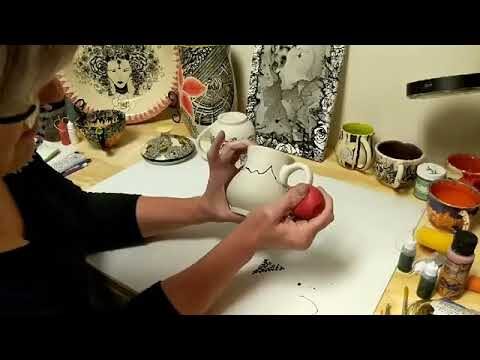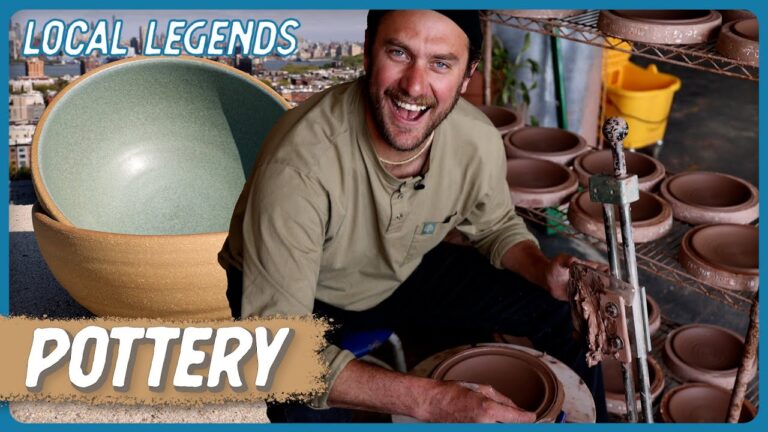Embracing imperfections in ceramics has become a growing trend in the art world, as artists and enthusiasts alike recognize the unique beauty and character that comes with handmade pieces. From uneven glazes to subtle cracks and blemishes, these imperfections add a sense of authenticity and charm to each ceramic creation. In this article, we’ll explore the beauty of embracing imperfections in ceramics and how this trend is reshaping the way we appreciate and create art. Whether you’re a seasoned ceramic artist or a novice enthusiast, there’s something truly captivating about the imperfect perfection of handmade ceramics.
What is the Japanese concept of embracing imperfections?
The Japanese concept of wabi-sabi celebrates imperfections as a fundamental aspect of beauty. Embracing transience and imperfection, this worldview values the beauty found in the imperfect, impermanent, and incomplete. It is a key element in various forms of Japanese art, highlighting the beauty in flaws and impermanence.
Can you identify a type of ceramic art that demonstrates perfection within imperfection?
Kintsugi, the art of embracing flaws and highlighting them with gold, showcases the concept of perfection in imperfection. This ancient Japanese technique not only repairs broken ceramics but also elevates them to a new level of beauty, symbolizing resilience and the acceptance of flaws as part of the object’s history. The golden lines that trace the cracks serve as a reminder that imperfections can be transformed into something unique and striking.
In a world obsessed with flawlessness, Kintsugi stands out as a powerful testament to the beauty that can be found in imperfection. It challenges the notion that broken objects are beyond repair or should be discarded, showing instead that there is value in embracing and celebrating the scars that come with time. Kintsugi’s philosophy of highlighting imperfections with gold serves as a poignant metaphor for life, where our own brokenness can be transformed into something truly remarkable and exquisite.
What is the kintsugi theory?
The kintsugi theory is a Japanese art form that involves repairing broken pottery with lacquer mixed with powdered gold, silver, or platinum. This technique not only fixes the object but also highlights its imperfections, creating a new form of beauty that celebrates the history and uniqueness of each piece. In essence, kintsugi embodies the idea that embracing flaws and imperfections can lead to a more enriched and meaningful existence, echoing the principles of wabi-sabi philosophy.
Unveiling the Artistry: Embracing Imperfections in Ceramic Masterpieces
Unveil the hidden beauty within imperfections as ceramic masterpieces showcase the artistry of embracing flaws. Each unique crack or irregularity tells a story of the artist’s handiwork, adding character and depth to the piece. By celebrating these imperfections, we acknowledge the human touch and the inherent beauty of imperfection in a world that often seeks perfection. Embrace the artistry of imperfections in ceramic masterpieces and discover the true essence of craftsmanship.
Imperfectly Perfect: The Allure of Flaws in Ceramic Art
In the world of ceramic art, imperfections are not seen as blemishes, but rather as unique and alluring characteristics that add depth and personality to each piece. From uneven glazes to asymmetrical shapes, these flaws are what make each creation imperfectly perfect. Artists embrace these imperfections, recognizing that they are a natural part of the creative process and contribute to the overall beauty of their work.
The allure of flaws in ceramic art lies in their ability to tell a story, to create a connection between the artist and the viewer. Each flaw represents a moment of vulnerability and authenticity, a reminder that perfection is not the goal. Instead, it is the imperfections that make each piece truly special and captivating, inviting us to appreciate the beauty in the imperfect and to embrace the uniqueness of handmade art.
In the world of ceramics, embracing imperfections is not just an acceptance of flaws, but a celebration of the unique and handmade. These imperfections tell a story of the artist’s journey and add character to each piece. By recognizing the beauty in the imperfect, we can foster a deeper appreciation for the art of ceramics and the craftsmanship behind it. So, let’s continue to embrace imperfections in ceramics, and in doing so, appreciate the beauty in the imperfect.



